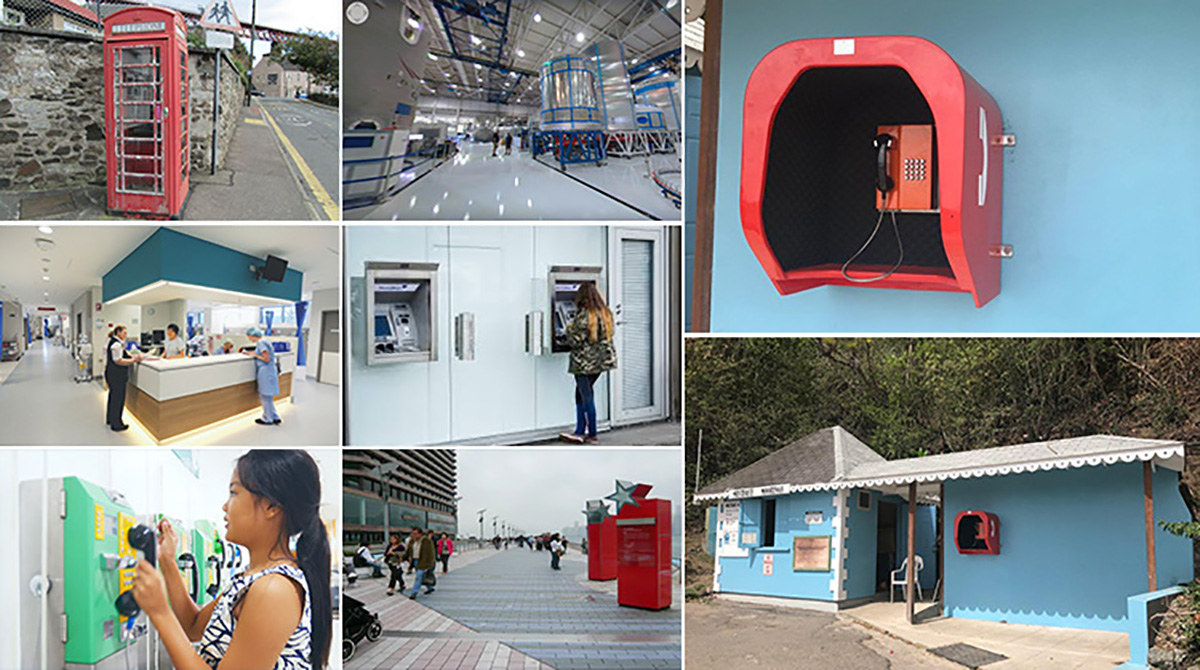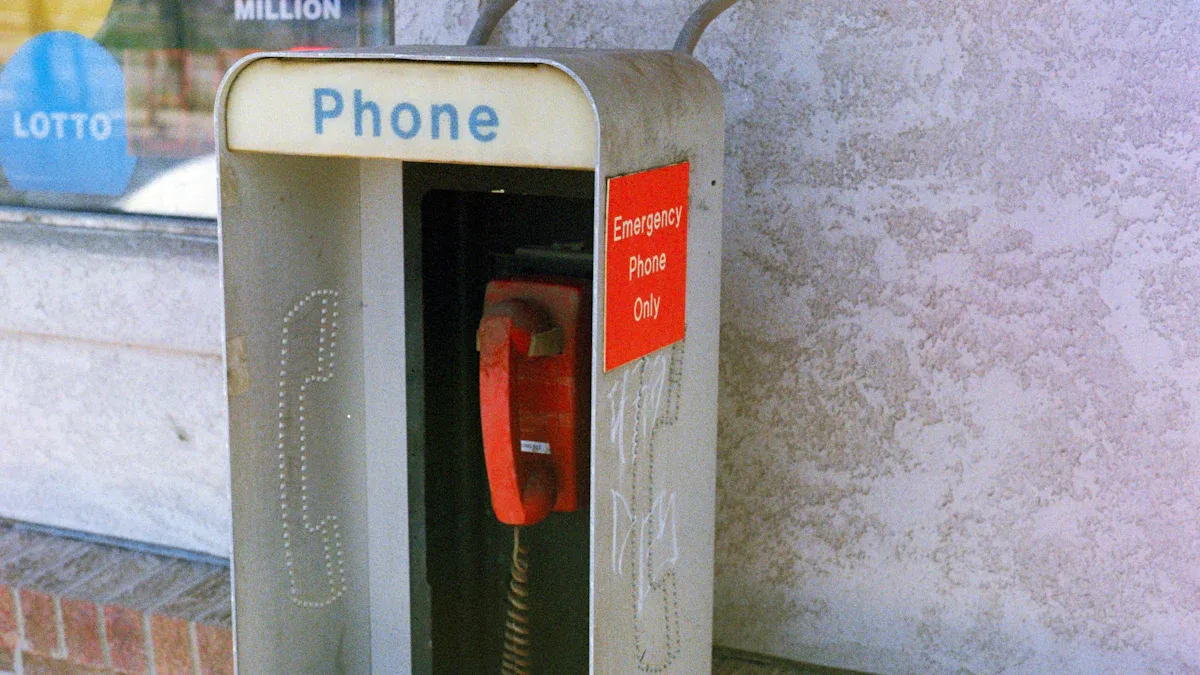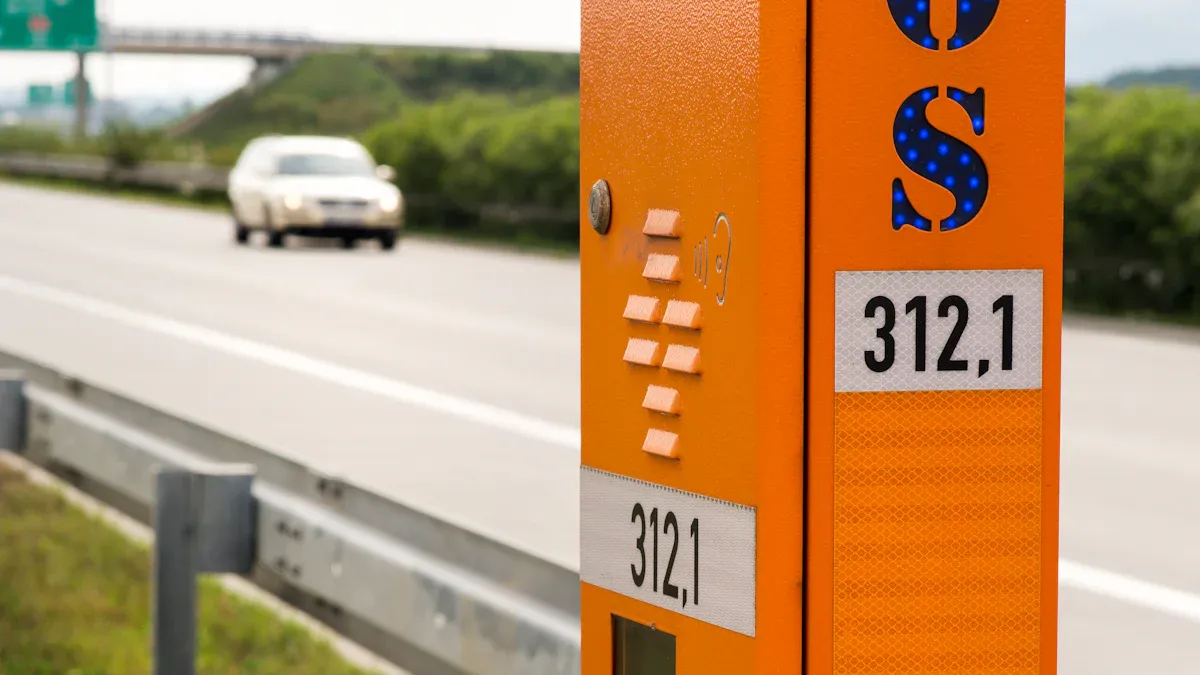
While traveling on highways, especially in remote areas, you might not always have reliable mobile signal coverage. This is where the Highway Emergency Telephone becomes a vital lifeline. These fixed devices provide you with instant access to emergency services during accidents or breakdowns. Unlike mobile phones, they ensure communication even in network dead zones. In countries like China, the China Highway Emergency Telephone system is a critical tool for safety. By offering a dependable emergency communication telephone, these systems help save lives and reduce response times. Their simplicity makes them accessible to everyone, regardless of technical skills.
Highway emergency telephones are more than just devices; they are your safety net in moments of crisis, serving as an essential emergency call telephone when you need it most.
Key Takeaways
- Highway Emergency Telephones help people call for help easily. They are useful in places where cell phones don’t work well. Always check for the nearest one when traveling.
- These phones are simple to use. Just pick up the phone, and you’ll be connected to emergency help right away. You don’t need to dial any numbers.
- These phones don’t rely on cell networks or batteries. They work even in faraway places or when the power is out.
- Their fixed spots along highways make help arrive faster. Knowing where they are can save time during an emergency.
- Highway Emergency Telephones make roads safer by letting people report problems quickly. They also make drivers feel safer and drive more carefully.
How Highway Emergency Telephones Work

Fixed Locations for Easy Access
When you travel on highways, finding help during emergencies can be challenging. Highway emergency telephones are installed at fixed intervals along the road to ensure you can access them easily. These locations are carefully chosen to maximize visibility and convenience. You’ll often find them near curves, bridges, or areas prone to accidents. Their bright colors and clear signage make them easy to spot, even from a distance.
Tip: If you ever face an emergency, look for the nearest Highway Emergency Telephone. Its fixed location ensures you won’t waste time searching for help.
Direct Connection to Emergency Services
Using a Highway Emergency Telephone connects you directly to emergency services. You don’t need to dial a number or navigate through automated menus. When you pick up the receiver, the system immediately alerts trained personnel who can assist you. This direct line eliminates delays and ensures your situation is addressed quickly.
Emergency operators can pinpoint your location based on the telephone you use. This feature is especially helpful if you’re unsure of your exact position on the highway. By providing immediate communication, these telephones play a crucial role in saving lives during accidents or breakdowns.
Reliable Power Supply in Remote Areas
Highways often stretch through remote regions where mobile networks fail. Highway emergency telephones are designed to work in these areas without interruption. They rely on independent power sources, such as solar panels or dedicated electrical connections, to stay operational.
Even during storms or power outages, these telephones remain functional. Their robust design ensures reliability, giving you peace of mind when traveling through isolated areas. You can trust them to work when other devices might fail.
Why Highway Emergency Telephones Are Still Relevant
Guaranteed Functionality in Network Dead Zones
When you travel through remote areas, mobile networks often fail. This can leave you stranded without a way to call for help. A Highway Emergency Telephone ensures you always have a reliable communication option. These devices operate independently of mobile networks, so they work even in the most isolated locations.
Imagine driving through a mountainous region where your phone shows “No Service.” In such situations, these telephones become your lifeline. Their fixed locations along highways mean you can always find one nearby. By providing guaranteed functionality, they offer peace of mind during your journey.
Tip: If you ever find yourself in a network dead zone, look for the nearest Highway Emergency Telephone. It’s designed to work when your mobile phone cannot.
Simplicity and Accessibility During Emergencies
Emergencies can be overwhelming. In such moments, you need a simple and straightforward way to get help. Highway Emergency Telephones are designed with ease of use in mind. You don’t need to remember emergency numbers or navigate through complicated menus. Just pick up the receiver, and you’re instantly connected to emergency services.
These telephones are accessible to everyone, regardless of age or technical skills. Their bright colors and clear instructions make them easy to use, even for someone unfamiliar with technology. This simplicity ensures that anyone can call for help quickly and efficiently.
Note: The next time you’re on a highway, take a moment to locate these telephones. Knowing where they are can save valuable time in an emergency.
Independence from Battery Life or Signal Strength
Mobile phones rely on battery life and signal strength to function. If your phone battery dies or you’re in an area with poor reception, you lose your ability to call for help. Highway Emergency Telephones eliminate this dependency. They operate on independent power sources, ensuring they remain functional at all times.
You don’t have to worry about charging these devices or finding a strong signal. Their robust design ensures they work in all conditions, whether it’s a stormy night or a sunny day. By being independent of mobile phone limitations, they provide a reliable safety net for all travelers.
Alert: Always remember that a Highway Emergency Telephone is there for you when your mobile phone fails. It’s a dependable backup you can count on.
The Role of Highway Emergency Telephones in Crisis Response

Reducing Emergency Response Times
When emergencies happen on highways, every second counts. Highway Emergency Telephones help reduce response times by providing a direct line to emergency services. You don’t need to waste time searching for a signal or dialing a number. Picking up the receiver instantly alerts trained personnel who can dispatch help to your location.
These telephones are strategically placed along highways to ensure quick access. Emergency operators can identify your exact position based on the telephone you use. This feature eliminates confusion and speeds up the arrival of assistance. Faster response times mean better chances of saving lives and preventing further accidents.
Tip: If you ever face an emergency, use the nearest Highway Emergency Telephone to get help quickly.
Assisting Accident Victims and Stranded Drivers
Accidents and vehicle breakdowns can leave you feeling helpless, especially in remote areas. Highway Emergency Telephones act as your lifeline in these situations. They connect you to emergency services that can provide medical aid, towing assistance, or other support.
Imagine being stranded on a deserted stretch of road with no mobile signal. These telephones ensure you’re never alone. Their reliable design guarantees functionality, even in harsh weather conditions. By offering immediate communication, they help accident victims and stranded drivers get the assistance they need.
Alert: Always remember that these telephones are there to assist you when other options fail.
Promoting Safer Highways for All
Highway Emergency Telephones contribute to safer roads by encouraging quick reporting of hazards. If you spot debris, an accident, or a stranded vehicle, you can use these telephones to alert authorities. Early reporting helps prevent further incidents and keeps the highway safe for everyone.
Their presence also reassures travelers, especially in areas with poor mobile coverage. Knowing you have access to reliable emergency communication boosts confidence and promotes responsible driving. These telephones play a vital role in creating a safer environment for all highway users.
Note: The next time you travel, take a moment to locate these telephones. They’re an essential part of highway safety.
Challenges Facing Highway Emergency Telephones
Declining Usage Due to Mobile Phone Adoption
You might wonder why fewer people use highway emergency telephones today. The rise of mobile phones has made these devices less popular. Most travelers rely on their smartphones to call for help during emergencies. With mobile networks expanding, many believe they no longer need fixed telephones on highways.
However, this shift creates a gap in safety. Mobile phones can fail in dead zones or run out of battery, leaving you without a way to communicate. Highway emergency telephones remain essential for situations where mobile devices cannot function. Their declining usage highlights the need to educate travelers about their importance.
Note: Even if you carry a smartphone, always remember that highway emergency telephones are a reliable backup when technology fails.
High Maintenance Costs and Risk of Vandalism
Maintaining highway emergency telephones requires significant resources. These devices need regular checks to ensure they work properly. Repairs, power supply upkeep, and cleaning add to the costs. In remote areas, maintenance becomes even more challenging due to limited access.
Vandalism also poses a serious threat. Some individuals damage or misuse these telephones, making them unusable for emergencies. This behavior not only wastes resources but also puts lives at risk. Authorities face the tough task of balancing maintenance costs with the need to keep these devices operational.
Alert: Damaging emergency telephones can prevent someone from getting help in a life-threatening situation. Always respect public safety tools.
Limited Public Awareness and Education
Many travelers overlook highway emergency telephones or don’t know how to use them. You might pass by these devices without realizing their purpose. Limited awareness reduces their effectiveness during emergencies.
Educational campaigns can help solve this problem. By teaching drivers about the location and use of these telephones, authorities can ensure more people benefit from them. Simple steps, like adding clear instructions or promoting awareness through road signs, can make a big difference.
Tip: Take a moment to learn about highway emergency telephones before your next trip. Knowing how to use them could save valuable time in an emergency.
The Future of Highway Emergency Telephones
Integration with Smart Technology
Highway emergency telephones are evolving to meet modern needs. Many systems now integrate with smart technology to enhance their functionality. For example, some telephones include GPS tracking to provide precise location data to emergency responders. Others feature sensors that detect environmental conditions, such as fog or heavy rain, and relay this information to traffic management centers.
You may also notice telephones equipped with cameras or microphones. These tools allow emergency operators to assess situations visually or audibly, improving their ability to respond effectively. Smart technology ensures these devices remain relevant in an increasingly digital world.
Tip: Keep an eye out for these advanced features the next time you see a highway emergency telephone. They represent the future of road safety.
Potential for Advanced Emergency Systems
The future of highway emergency telephones includes integration with advanced emergency systems. Imagine a scenario where a telephone automatically alerts nearby vehicles about an accident. This could prevent secondary collisions and save lives.
Some systems may also connect directly to autonomous vehicles. These vehicles could receive real-time updates about road conditions or hazards through emergency telephones. This level of connectivity would create a safer and more efficient highway environment.
Alert: Advanced systems like these could revolutionize how emergencies are managed on highways.
Balancing Traditional and Modern Safety Solutions
While technology advances, traditional highway emergency telephones still play a vital role. Not everyone has access to smartphones or understands how to use complex systems. These telephones provide a simple, reliable option for all travelers.
The challenge lies in balancing old and new solutions. Authorities must maintain traditional telephones while incorporating modern features. This approach ensures safety for everyone, regardless of their technological capabilities.
Note: The combination of traditional and modern tools creates a comprehensive safety net for highway users.
Highway emergency telephones continue to serve as a critical safety tool, especially in areas where mobile phones fail. Their reliability and ease of use make them indispensable during crises. You can trust these devices to provide immediate help when it matters most. Preserving these systems ensures that everyone has access to a dependable safety net. Modernizing them with advanced features will further enhance their role in highway safety, creating a secure environment for all travelers.
Tip: Always locate the nearest Highway Emergency Telephone when traveling. It could save valuable time in an emergency.
FAQ
What should you do if you can’t find a Highway Emergency Telephone nearby?
If you can’t locate a telephone, stay calm. Use your mobile phone to call emergency services if possible. If your phone doesn’t work, signal passing vehicles for help. Always stay visible and safe while waiting for assistance.
Tip: Carry a reflective vest or flashlight for better visibility during emergencies.
Are Highway Emergency Telephones free to use?
Yes, these telephones are free. You don’t need coins, cards, or payment to make a call. They are designed to provide immediate help without barriers.
Alert: Misusing these telephones can delay real emergencies. Use them responsibly.
How can you identify a Highway Emergency Telephone?
Look for bright colors like orange or yellow and clear signage. These telephones are often placed at regular intervals along highways. They are easy to spot near bridges, curves, or accident-prone areas.
Emoji Reminder: Emergency telephones often have a symbol of a phone or SOS nearby.
Do Highway Emergency Telephones work during storms?
Yes, they are built to function in all weather conditions. Independent power sources like solar panels or dedicated connections ensure reliability during storms or outages.
Note: Trust these devices to work when other communication tools fail.
Can Highway Emergency Telephones pinpoint your location?
Absolutely! When you use one, emergency operators automatically receive your location based on the telephone’s fixed position. This feature helps responders reach you faster.
Tip: Always use the nearest telephone for accurate location tracking.
Post time: May-28-2025
